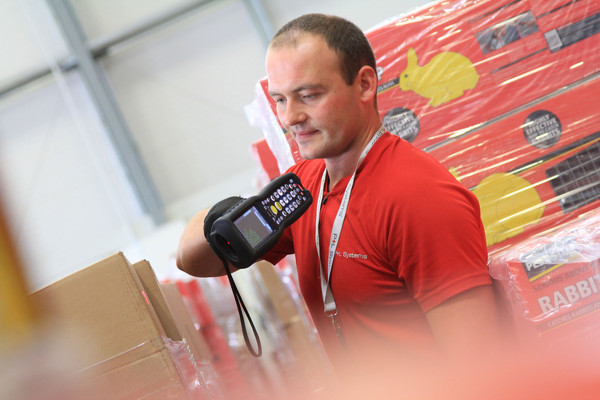The UK’s productivity woes have been the focus of much newspaper coverage in the past few years. With continuing low output, our economy can’t grow and we won’t see an improvement in wages or living standards. And with Brexit on the horizon, the worry is that we will become less able to compete with other industrialised nations.
There are many ways that distribution businesses can drive productivity and ASN receiving is one of them. ASN receiving is a function of warehouse management systems that significantly speeds up the receiving element of warehousing, driving greater efficiency and boosting productivity and output.
What is ASN receiving?
ASN receiving is an efficient way of receiving stock into the warehouse. It is based on the use of the Advanced Shipping Notice – or ASN – which is a notification of a pending delivery. Usually sent via EDI, this electronic notification advises the receiving party that the goods are on their way.
Not only does the ASN advise that a shipment is pending, it also provides detailed information on the contents of the delivery, including which goods and how many of them will be in a particular consignment. It can also provide additional detail such as the weights of the products, how the units within the shipment are packed, the type of packaging, batch and serial numbers and other characteristics.
This level of detail can be incredibly helpful. Consider the example of retail clothing stockists, for instance. Having to manually sort and count garments in their multiple colour and size permutations takes considerable time. Yet with ASN receiving, it’s all received in one go, and the ASN describes and details all the various combinations.
The ASN is received directly into the purchaser’s ERP and WMS systems, so that the delivery can be noted and goods can be booked in.
How does the ASN receiving process work?
The vendor generates an ASN and bar code labels. It affixes the bar code labels to the boxes, crates or pallets being shipped and sends the ASN via EDI (Electronic Data Interchange) to the purchaser. Where there is a central buying operation, the head office will then forward the ASN to its retail outlet.
On receiving the shipment, the retailer scans the bar code label, which automatically matches it up with the ASN received previously.
With just a single scan of this bar code on the outer pallet, the receiver can check and book in the entire purchase order without needing to individually go through all the products in the shipment.
Simply scanning – or entering – the ASN track and trace number generates the full details of the delivery and all the product lines associated with that ASN are received at the same time.
What productivity benefits does ASN receiving bring?
Booking in goods and validating shipments are time consuming procedures. But with ASN receiving, the process takes less time, particularly where the vendor is known to the buyer and there is a trusted relationship. This sort of relationship can be validated by each party having Authorised Economic Operator (AEO) status. AEO certification enhances the trust within the supply chain, and endorses the buyer’s confidence in the accuracy of the shipment.
ASN receiving – together with AEO status – gives a high level of assurance that shipments will be correct, allowing buyers to feel confident that they needn’t waste time checking shipments when they can instead simply scan a barcode. The quick scan books in a shipment in seconds. Compared with the time that otherwise would be spent counting products, checking that quantities and types match with line numbers, checking batch numbers, and then booking the products in, ASN receiving is considerably faster.
ASNs also advise warehouse management of the estimated delivery time of pending shipments. This allows them to arrange their staff, deploying operatives to receive the goods at the appropriate times.
Large retailers such as Tesco and B&Q simply won’t deal with suppliers that can’t provide ASN. Their throughput is so great that it just harms productivity too much to manually check, count and book in all their deliveries.
Our appraisal is that ASN receiving saves time by a factor of four or five. And time-saving necessarily means cost savings. As an example, Supply Chain Digest estimates that ASN receiving can reduce receiving costs by as much as 40%.
Are there any constraints with ASN receiving?
This method of receiving does require a high level of confidence that the anticipated goods and the right quantities actually match the stock that is ultimately delivered. But as explained, with AEO status and a trusted supply chain, this is less of a risk.
Our thoughts
Where you have a trusted supply chain, you can leverage ASN receiving to enhance productivity by streamlining and improving workflows within the warehouse. Both EDI and WMS facilitate the use of ASNs, allowing details to be automatically transmitted and received and goods swiftly booked in – without counting – with just a simple scan of a barcode.
If you would like to learn more about how HighJump WMS manages ASN receiving, please call us on 020 8819 9071 or get in touch.
